Here is one of the largest and most majestic monuments of the Camaldolese Order: a complex whose construction works continued for no less than three hundred years, starting in 1515, when the monks left Classe after the destructions of the Franco-Spanish War of 1512 (with the tremendous “battle of Ravenna”). The Classense Library, filled with an extraordinarily rich collection (eight hundred thousand books, 750 manuscript volumes, precious codexes and maps), is also a truly architectural and artistic gem. The Aula Magna stands out above everything else, adorned with statues, stuccos, and finely carved wooden bookcases; decorated with frescoes and paintings by Francesco Mancini, commissioned by Abbot Pietro Canneti between the seventeenth and eighteenth centuries. Then the large refectory, the old sacristy (Sala Muratori), and the monumental cloisters. The first cloister, perhaps a bit dark, has a Baroque façade by Giuseppe Antonio Soratini and 24 columns. The second, elegant and impressive, was designed by Tuscan architect Giulio Morelli, and built between 1611 and 1620. It has 32 Istrian stone pillars. In the middle there’s a cistern designed in the early eighteenth century by Domenico Barbiani and surrounded by large trees. Quintessentially, the library is a place for reading and studying, hence of utmost silence. However, there were exceptions as early as the late seventeenth century; a booklet printed in Ravenna, precisely in 1677, mentioned of at least two “concerts” held in the library, the first entitled “Gli amori di Antioco e di Stratonica (The Loves of Antiochus and Stratonica); the second “La virtù trionfante” (The Triumphant Virtue) by D. Andrea Rossini of Venice. The Cloisters “debuted” at the Festival in 2004, hosting the melologue “Francesca da Rimini”, text by Nevio Spadoni and music by Luigi Ceccarelli. They have become a regular and much appreciated venue for many chamber music events and small but prized ensembles.
Chiostro della Biblioteca Classense
Teatro Alighieri
Teatro Alighieri
Early nineteenth century: after more than one hundred years of life the Communicative Theatre, made entirely out of wood, was collapsing and the Public Administration decided to build a new facility. The first step was to identify an adequate area: Piazzetta Degli Svizzeri, a squalid square surrounded by slums but placed at the very heart of the city, was the chosen place. In 1838, the project was entrusted to two architects from Veneto, the brothers Tomaso and Giovan Batista Maduna. The former had ministered to the restauration of La Fenice, the most famous theatre in Venice, which had been partially destroyed by a fire. Tomaso Meduna also signed the project of the first railway bridge connecting Venice to the mainland. Under the lead of the two architects, the building which resulted was a neoclassical structure very similar to the Venetian theatre. The apostolic delegate Monsignor Stefano Rossi suggested to dedicate the theatre to Dante Alighieri. The official opening ceremony took place on May 15th 1852 with “Roberto il diavolo” by Giacomo Meyerbeer and the ballets “La Zingara” and “La finta sonnambula” with the étoile Augusta Maywood.
Across almost two centuries of life orchestra pit, stage, and parterre have hosted personalities from all around the world, which makes it impossible to list them all here. However, two curiosities can be mentioned: Benedetto Croce and his partner, Angelina Zampanelli, attended a recital by Ermete Zacconi in 1899. Few years later, on May 27th 1902, Gabriele D’Annunzio and Eleonora Duse came to see “Tristano e Isotta”. On that night all the box office revenues were donated to the Civil Hospital and the Vate offered 100 lire, while a seat in parterre costed 4 lire.
In 1959, the Theatre was closed for restoring. It opened again eight years later, when it began the quality journey that has brought it to the present international notoriety. On February 10th 2004, the “Ridotto” was dedicated to Arcangelo Corelli on the 350th anniversary of his birth in Fusignano.
Palazzo Mauro De André
Palazzo Mauro De André
The Arts and Performing Arts Building is a rarest example of contemporary architecture in Ravenna and it has proven to be one of the most functional indoor facilities nationwide. A source of pride, in short, for the city. The project bears the signature of a particularly refined architect, Carlo Maria Sadich, designer, among other things, of the ephemeral structures of the Estate Romana (Roman Summer) at the Circus Maximus in 1984. Desired by the Ferruzzi Group and named after an associate who died prematurely, Mauro De André, the brother of the singer-songwriter Fabrizio, the Pala was inaugurated in October 1990 and since then hosts major sporting, business, and artistic events. Starting with, the same year it was inaugurated, the concert led by Valerj Gergiev, with the participation of Mstislav Rostropovič and Uto Ughi. The entire complex has three excellent architectural features. First, a huge, 33-metre high, white square dome, composed of a reticular metal structure covered by a translucent membrane made of fibreglass. A real gem was added to the structure: Alberto Burri’s “Grande Ferro R” sculpture, which brings to mind the hull of a capsized ship. Finally, there’s the “Danteum”, a hypostyle hall which serves as an access to the Pala and consists of pillars and columns; the external pillars are made of exposed stone with columns in the middle: nine are iron and red (Hell), nine are made of Carrara marble (Purgatory) and nine are made of crystal (Heaven). The mosaic made by Elisa Montessori and Luciana Nocturnes are also absolutely beautiful. The interior has 3,800 seats, but the area can be changed by moving the movable tiers which, sliding on rails, can be placed open-style on the back. Every year the Pala hosts some of the most important events of the Festival. The inauguration of such a special relationship was held in 1992 with the Special Concert for the 500th anniversary of the discovery of America, with Riccardo Muti leading the Philadelphia Orchestra.





